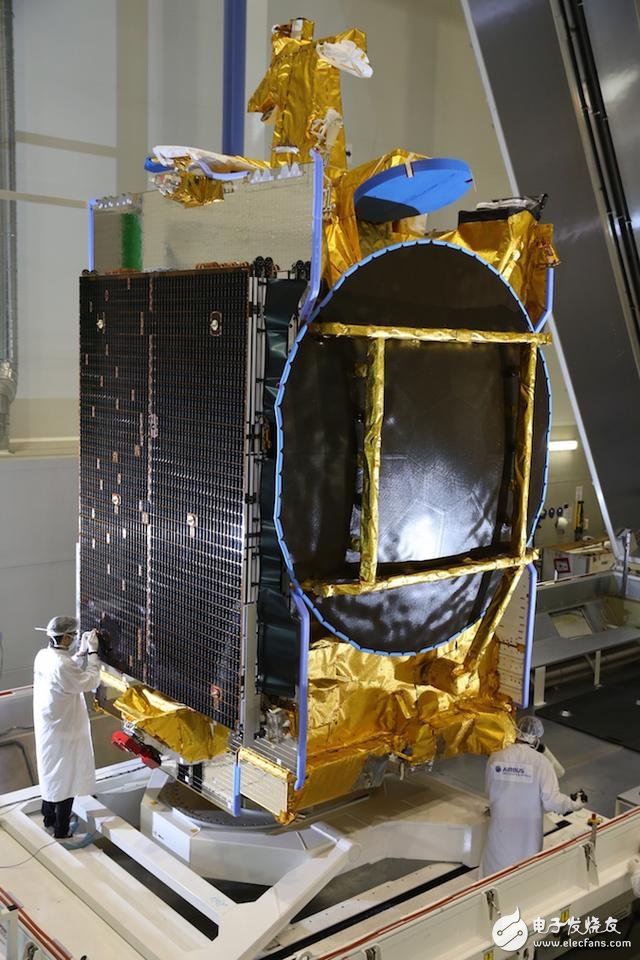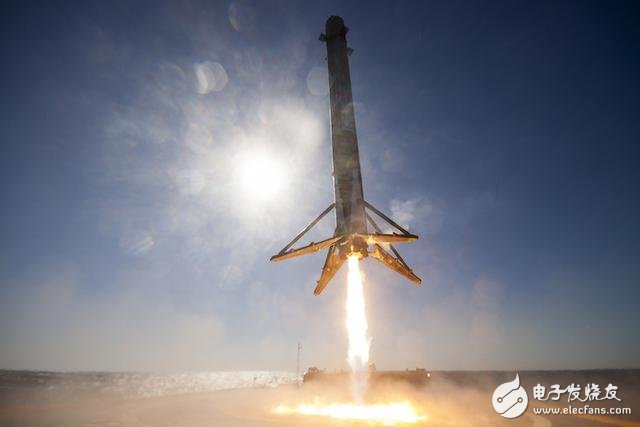According to the US space news site spaceflightnow on the 17th of this month, the European Satellite Company (SES) has recently shipped a communications satellite SES10 to Cape Canaveral, Florida, USA, to prepare for the launch. The satellite is scheduled to be launched by SpaceX in late February, and the launch will use the old rockets recovered by SpaceX for the first time. If the mission is successfully launched and the rocket recovery is completed again, it will create another very important first time in the history of human space and trigger global aerospace technological innovation.

The SES10 communications satellite that arrived in front of the Cape Canaveral launch site is likely to become the first satellite to be successfully launched by an old rocket.
SES is the world's largest satellite operator and is headquartered in Luxembourg. The SES10 communications satellite departed from the satellite manufacturing site in Toulouse, France, on Sunday, and flew to the Atlantic Ocean to arrive at Cape Canaveral.
The satellite, scheduled to be launched in late February, will be launched at the 39A launch pad at Cape Canaveral. The 39A launch pad was used by NASA to launch the Saturn V rocket in the Apollo era and later the space shuttle before SpaceX completed its transformation. SpaceX also has the No. 40 launch pad at Cape Canaveral, which was damaged in the September 1 bombing accident and is currently not ready for launch. Both the 39A and 40 launchers are SpaceX leased from NASA.
SES and SpaceX finalized the launch plan last year. Once the mission is successfully launched, SpaceX will thoroughly refine the rocket technology, and rocket reuse technology is the most important step for SpaceX to reduce the launch cost.
The SES10 satellite was developed by the Airbus Group and weighs 5.3 tons. Such a large communication satellite will consume most of the propeller 9's propellant, allowing the rocket to return to Earth after sending the satellite to the orbit. There is not much left of the decelerating propellant, so the success of this mission is very worth looking forward to. In March last year, SpaceX launched SES9, another communication satellite of SES. The satellite was similar in quality to SES10 and its target orbit was similar. However, the satellite launch was successful and the rocket recovery failed.

The old rocket that launched the SES10 satellite came from a launch mission in April 2016, which was the first time SpaceX had achieved a marine recovery rocket.
The old rocket used to launch the SES10 satellite came from the launch mission on April 8, 2016, when the rocket was used to launch a cargo dragonship to the International Space Station. After a 9-minute lift, the first-class rocket landed on a barge (sea recycling platform) in the Atlantic Ocean. The entire landing process was perfect. This is the first time SpaceX has completed the marine recovery rocket.
Before the launch, SpaceX engineers had tested the Merlin 1D engine used on the Falcon 9 rocket several times and confirmed that it could be used multiple times. Last year, SpaceX conducted a series of old rocket wing ignition tests at Texas test sites to confirm whether these recovered rockets could again undertake launch missions.
Before the launch of the SES10 satellite, SpaceX will have two additional missions, the EchoStar 23 communications satellite launched on January 26 and the cargo dragon spacecraft that will be launched on the International Space Station on February 8. If these two launch missions can proceed smoothly, the SES10 communications satellite will be launched around February 22, which was confirmed by SES.
GXynne Shotwell, president and chief operating officer of SpaceX, said in CBS News last week that she hopes SpaceX will launch more than 20 times in 2017 and achieve the first launch of the heavy Falcon rocket.
SpaceX and SES did not disclose the terms of the SES10 satellite launch contract, but Shortwell said last year that it would be 10% off on the cost of launching customers who are willing to use the old rocket.
The SES10 communications satellite will operate in geosynchronous orbit for 15 years, providing broadcast television programming and communication services to users in the Americas. The satellite carries a 55-channel Ku-band transponder, with users covering the north to the United States and Mexico, and south to the southernmost point of Cape Horn in Chile. The satellite will eventually be positioned at 67 degrees west longitude.
Mobile Phone Dust Screen,Mobile Phone Matching Products,Computer Mobile Phone Matching Products
SHAOXING HUALI ELECTRONICS CO., LTD. , https://www.cnsxhuali.com